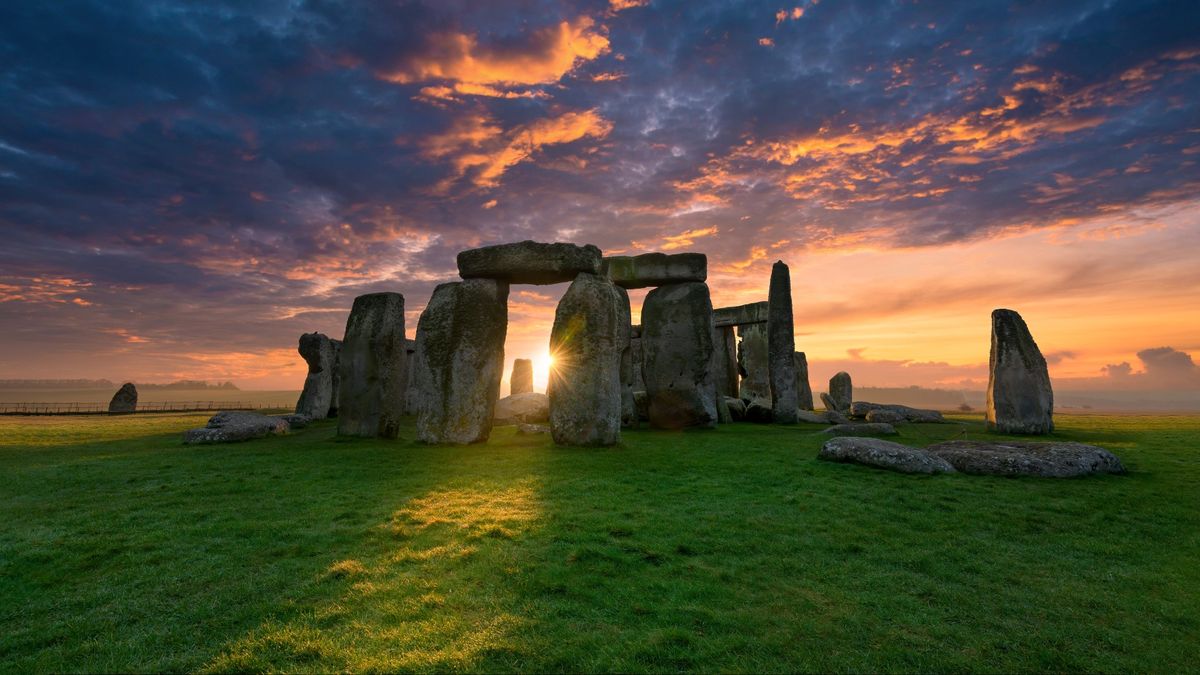On June 20, 2024, the Summer Solstice will mark the official beginning of summer, but this year it will be particularly historic due to its early start. The Summer Solstice typically falls on June 21, but in 2024 it will occur a day earlier. This rare occurrence is due to the way the Earth’s orbit aligns with the sun, resulting in the longest day of the year in the Northern Hemisphere.
The early start of the summer season is a cause for celebration for many people who look forward to longer days, warmer weather, and outdoor activities. It also marks a significant shift in the natural world, as plants begin to bloom, animals become more active, and people spend more time outside enjoying the sunshine.
This early start to summer is a reminder of the cyclical nature of the seasons and the beauty of the natural world. It is a time to appreciate the abundance of life and the vibrant energy that comes with the summer months. As we welcome the Summer Solstice in 2024, let us embrace the early start of the season and all the possibilities it brings.

Understanding the Summer Solstice
The Summer Solstice is a natural phenomenon that occurs when the Earth’s axial tilt is most inclined towards the sun, resulting in the longest day of the year in the Northern Hemisphere. This astronomical event marks the official beginning of summer and is celebrated in various cultures around the world.
Understanding the Summer Solstice involves recognizing its significance in relation to the changing seasons and the patterns of sunlight and darkness throughout the year. It is a time when the sun reaches its highest point in the sky, casting the most intense and direct sunlight onto the Earth. This has profound effects on the environment, influencing the behavior of plants, animals, and even human beings.
Many ancient civilizations viewed the Summer Solstice as a time of renewal, abundance, and vitality, with rituals and ceremonies held to honor the sun and the cycle of life. Today, the Summer Solstice is still observed through festivals, gatherings, and spiritual practices that connect people to the natural world and the rhythms of the Earth.
By understanding the Summer Solstice, we can deepen our appreciation for the interconnectedness of all living beings and the importance of honoring the cycles of nature. It serves as a reminder of our place in the universe and the power of the sun to sustain life on Earth. As we witness the longest day of the year, we are reminded of the beauty and wonder of the natural world and the need to protect and preserve it for future generations.
Why the Solstice is Early This Year
The solstice, which marks the longest day of the year in the Northern Hemisphere, is occurring earlier than usual this year. This shift in timing is due to a variety of factors, including the Earth’s tilt on its axis and its elliptical orbit around the sun. These natural phenomena create variations in the length of the day and the position of the sun in the sky throughout the year.
Additionally, the solstice is influenced by the gravitational pull of other celestial bodies, such as the moon and Jupiter. These gravitational forces can cause slight fluctuations in the Earth’s orbit, leading to changes in the timing of the solstice. While the exact reasons for the early solstice this year may be complex and multifaceted, it is a reminder of the dynamic and ever-changing nature of our solar system. As we observe this astronomical event, we are reminded of the beauty and intricacy of the universe in which we live.
By studying and understanding the factors that contribute to the timing of the solstice, we can deepen our appreciation for the wonders of the natural world and gain insights into the mechanisms that govern our planet’s annual cycle of seasons. Ultimately, the early solstice serves as a reminder of the interconnectedness of all things in the cosmos and the constant motion and change that define our existence in the universe.

Cultural and Environmental Implications
Cultural and environmental implications are intertwined in complex ways that shape the way societies interact with their surroundings. The beliefs, values, and practices of a culture often influence how people perceive and interact with the natural world. For example, indigenous cultures may have deep spiritual connections to the land and see themselves as stewards of the environment, while industrialized societies may prioritize economic growth and development over environmental conservation.
These differing cultural perspectives can lead to conflicts over land use, resource management, and conservation efforts. Additionally, cultural practices such as hunting, fishing, and agriculture can have significant impacts on local ecosystems and biodiversity. For instance, overfishing in certain regions can lead to the depletion of fish stocks and threaten the livelihoods of fishing communities.
Similarly, the expansion of agriculture into natural habitats can result in deforestation, soil erosion, and loss of biodiversity. These cultural practices can also have broader environmental implications, such as contributing to climate change through deforestation or overconsumption of resources.
Ultimately, understanding the cultural and environmental implications of human activities is essential for promoting sustainable practices that balance the needs of people and the planet. By recognizing the interconnectedness of culture and the environment, societies can work towards finding solutions that respect diverse cultural perspectives while also protecting the natural world for future generations.
Celebrating the Early Solstice
Celebrating the Early Solstice is a tradition that has been passed down through generations. The early solstice marks the longest day of the year, when the sun reaches its highest point in the sky. Many cultures around the world have different ways of celebrating this special time of year. In some places, people gather to watch the sunrise and participate in rituals and ceremonies to honor the sun and its life-giving energy.
Others may have feasts, dancing, and music to mark the occasion. The early solstice is a time of joy and gratitude for the abundance of light and warmth that the sun provides. It is a time to connect with nature and appreciate the beauty of the changing seasons. By coming together to celebrate the early solstice, people strengthen their bonds with one another and with the natural world. This tradition helps to foster a sense of community and connection to the earth.
As the sun reaches its peak and begins its descent, it serves as a reminder of the cyclical nature of life and the importance of living in harmony with the rhythms of the natural world. Celebrating the early solstice allows us to pause and reflect on the beauty and abundance that surrounds us, and to give thanks for the blessings we have received. It is a time to come together, to celebrate life, and to honor the sun and all that it provides.

Looking Ahead: Future Solstice Trends
As we look ahead to future solstice trends, it is clear that our society is shifting towards a more sustainable and environmentally conscious mindset. With increasing awareness of the impact of human activities on the planet, there is a growing emphasis on renewable energy sources, such as solar and wind power. This shift towards sustainability is evident in the increasing popularity of electric vehicles and the push for more eco-friendly transportation options.
Additionally, there is a rising interest in sustainable fashion, with more consumers seeking out ethically sourced and eco-friendly clothing options. In terms of technology, advancements in artificial intelligence and automation are expected to revolutionize industries and create new opportunities for growth and innovation.
As we move towards the future, it is crucial that we continue to prioritize sustainability and environmental stewardship in order to ensure a healthy and thriving planet for future generations. By embracing these trends and making conscious choices to support a more sustainable lifestyle, we can pave the way for a brighter and more sustainable future.
